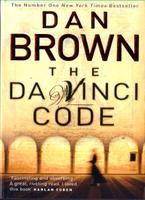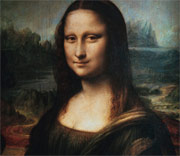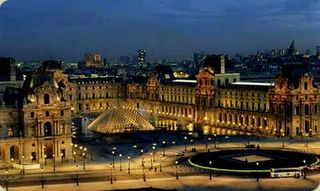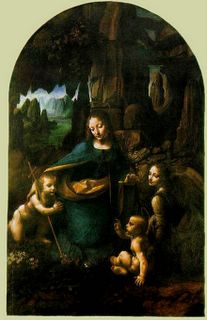
The Da Vinci Code
Author: Dan Brown
Publisher: Bantam Press; 2003
Price: RM34.90
Dan Brown's latest thriller is an exhaustively researched about secret religious societies and vengeance. The action kicks off in Paris with the murder of the Louvre's chief curator, whose body is found laid out in symbolic repose at the foot of the Mona Lisa.

The book concerns the attempts of the protagonist, Robert Langdon who is the Professor of Religious Symbology at Harvard University, to solve the murder of renowned curator Jacques Saunière. Saunière's body is found inside the Louvre naked and posed like Leonardo da Vinci's famous drawing, the Vitruvian Man, with a cryptic message written beside his body and a Pentacle drawn on his stomach in his own blood. The interpretation of hidden messages inside Da Vinci's famous works, including the Mona Lisa and The Last Supper, figure prominently in the solution to the mystery.

The main conflict in the novel revolves around the solution to two mysteries:
• What secret was Saunière protecting that led to his murder?
• Who is the mastermind behind his murder?
Jacques Saunière was the head of the Priory of Sion and therefore possessed the knowledge of the "keystone", which in turn reveals the location of the Holy Grail, as well as documents which would shake the foundation of Christianity and the Church. He was killed in order to extract this information from him and eliminate the members of the Priory of Sion.
• What secret was Saunière protecting that led to his murder?
• Who is the mastermind behind his murder?
Jacques Saunière was the head of the Priory of Sion and therefore possessed the knowledge of the "keystone", which in turn reveals the location of the Holy Grail, as well as documents which would shake the foundation of Christianity and the Church. He was killed in order to extract this information from him and eliminate the members of the Priory of Sion.

The message Saunière wrote on the floor before dying contained the extra line "P.S. Find Robert Langdon". As such, the police therefore suspected Professor Langdon to be the murderer. Sophie Neveu a reknown cryptographer and the granddaughter of Saunière saw the entire text of the message by accident when it was faxed to her office by the police. Sophie realized immediately that the message was meant for her, since her grandfather used to call her "Princesse Sophie" (i.e. "P.S.") when she was a girl. She informs Langdon of this secretly when they are in the Louvre.
The other three lines of Saunière's blood message are anagrams. The first line are the digits of the Fibonacci sequence out of order. The second and third lines ("O, draconian devil!" and "Oh, lame saint!") are anagrams respectively for "Leonardo da Vinci" and "The Mona Lisa" (in English). These clues were meant to lead to a second set of clues. On the glass over the Mona Lisa, Saunière wrote the message "So dark the con of Man" with a curator's pen that can only be read in black light. The second clue is an anagram for Madonna of the Rocks, another Da Vinci painting hanging nearby. Behind this painting, Saunière hid a key. On the key, written with the curator's pen, is an address.
 Both Langdon and Sophie Neveu, become both suspects and detectives searching for not only Neveu's grandfather's murderer but also the stunning secret of the ages he was charged to protect. The mystery leads Neveu and Langdon on a breathless flight through France, England, and history itself. It also reveal about the secret of the Knights Templar, the symbolism in many of the world's most treasured paintings, as well as architectural symbolism in some of history's most sacred churches.
Both Langdon and Sophie Neveu, become both suspects and detectives searching for not only Neveu's grandfather's murderer but also the stunning secret of the ages he was charged to protect. The mystery leads Neveu and Langdon on a breathless flight through France, England, and history itself. It also reveal about the secret of the Knights Templar, the symbolism in many of the world's most treasured paintings, as well as architectural symbolism in some of history's most sacred churches.The unraveling of the mystery requires the solution to a series of brain-teasers, including anagrams and number puzzles. The solution itself is found to be intimately connected with the possible location of the Holy Grail and to a mysterious society called the Priory of Sion, as well as to the Knights Templar. The Catholic organization Opus Dei also figures prominently in the plot.
 While the novel claims to contain elements of historical truth within its fictional framework, the book has attracted a large amount of criticism, including at least ten other books written to debunk its various claims. The book claims that the Roman Catholic Church has been involved in a conspiracy to cover up the true story of Jesus. The novel has also received a great deal of complaint regarding Brown's clichéd style and improbable storyline.
While the novel claims to contain elements of historical truth within its fictional framework, the book has attracted a large amount of criticism, including at least ten other books written to debunk its various claims. The book claims that the Roman Catholic Church has been involved in a conspiracy to cover up the true story of Jesus. The novel has also received a great deal of complaint regarding Brown's clichéd style and improbable storyline.The book is full of fables and is only interesting for those who love conspiracy theories. Good reading materials.
1 comment:
Yes, so, er, what do YOU think of the book?
Post a Comment